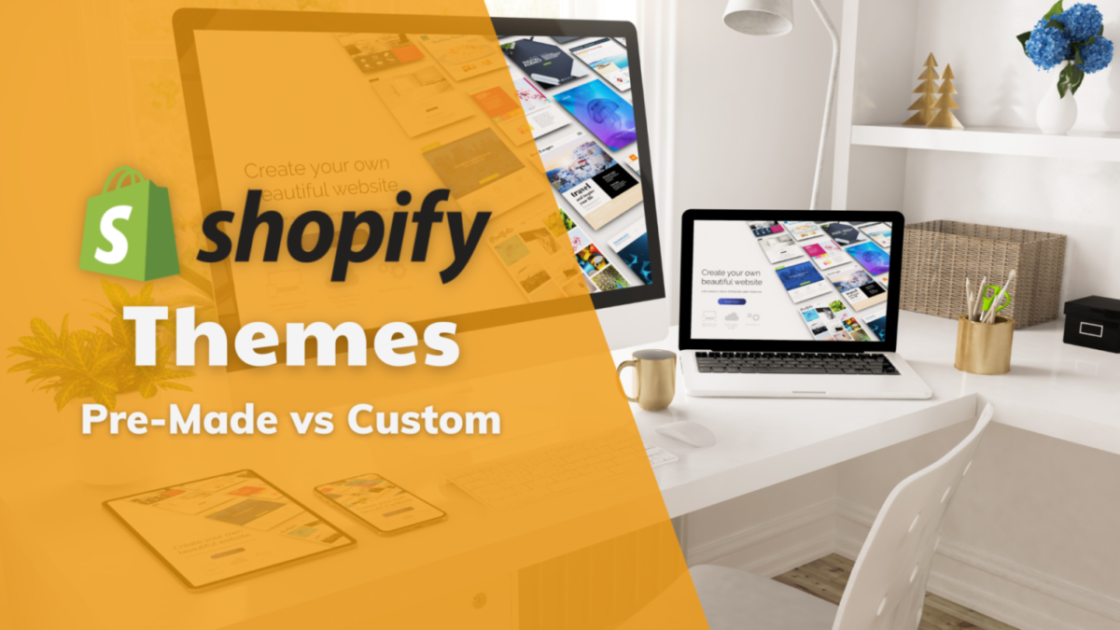Blog

While Shopify provides a user-friendly platform for building online stores, the intricacies of design and development costs can be daunting for many merchants. This guide sheds light on the factors influencing Shopify website design pricing, helping you make informed decisions.
Shopify’s Role in Design
Contrary to popular belief, Shopify doesn’t offer bespoke website design services. However, it provides a robust platform with a vast library of customizable themes, allowing merchants to create visually appealing stores without coding expertise.
Attention Merchants
Theme Selection:Shopify’s theme store offers a wide range of free and premium options. Free themes provide a solid foundation, while premium themes offer advanced features and customization options.
Custom Design: For a truly unique look and feel, hiring a Shopify expert to create a custom design is essential. Costs vary based on designer expertise, project complexity, and required features.
Development and Customization: Implementing custom features, integrations, or code modifications can significantly impact pricing.
Breaking Down the Costs
The price of a Shopify website can range from hundreds to thousands of dollars, depending on your specific needs. Here’s a general breakdown:
Additional Factors Affecting Price
Shopify Website Design Pricing
The Shopify web designer’s cost range depends on the type of pricing model you choose. Primarily, there are three types of pricing models for Shopify website design–time-based, fixed, and value-based.
All of them have some positive and negative aspects. So, let’s explore them in detail now:
1. Time-Based Pricing Mode
Time-based pricing is about charging clients for hourly work done. So, for time-based projects, each hour counts until the design is finalized. This model best suits freelance developers and agencies that offer customized Shopify store creation services.
Here’s what you can expect with time-based pricing models:
While time-based pricing remains popular within the creative industries, alternative approaches—such as fixed or value-based pricing—may offer greater stability and predictability for both parties.
Pros of Time-Based Pricing
Cons of Time-Based Pricing
When Does Time-Based Pricing Make Sense?
This model excels in scenarios where
2. Fixed Pricing Model
Fixed pricing is a clear approach where the cost remains steady regardless of market fluctuations. It’s a preferred model with stable demand and known production costs. Essentially, it gives customers stability in their purchases.
Some good examples of fixed pricing are:
Pros of Fixed Pricing
Cons of Fixed Pricing
When Does Fixed Pricing Make Sense?
This model excels in scenarios in which
3. Value-Based Pricing Model
Value-based pricing is a strategy where the price of a product or service is determined by its perceived value to customers rather than production costs. This approach focuses on understanding customers’ willingness to pay and aligning prices with the value they receive.
How Value-Based Pricing Works
Pros of Value-Based Pricing
Cons of Value-Based Pricing
When Does Value-Based Pricing Make Sense?
Value-based pricing web design model helps in situations where
FAQs
How much does it cost to design a website on Shopify?
Designing a website on Shopify costs vary widely based on complexity and features. Expect to budget anywhere from a few hundred to several thousand dollars.
How much do Shopify designers charge?
Shopify designers typically charge based on project scope and expertise. Rates can range from $50 to $150 per hour or more, depending on the designer’s experience and location.
How much should I pay someone to build a Shopify website?
The cost to build a Shopify website depends on customization needs. Basic setups can start around $500-$1,000, while complex designs with custom features may range from $2,000 to $10,000 or more.
Is it free to build a website on Shopify?
Shopify offers a 14-day free trial, but beyond that, you’ll need to choose a paid plan starting at $29 per month. Additional costs may include themes, apps, and development fees.
How much can I charge for website design?
Website design pricing varies based on factors like complexity, client needs, and your expertise. Rates typically range from $500 to $5,000 or more per project.
Can I pay Shopify to build my website?
Shopify itself does not offer direct website building services, but you can hire Shopify Experts or agencies who specialize in Shopify development to build your website for a fee.
Final Thoughts
Investing in a well-designed Shopify store is crucial for eCommerce success in 2024-2025. While costs can vary significantly based on project scope, design complexity, required features, and ongoing maintenance, understanding these factors and budgeting wisely can set your store up for long-term success. Prioritizing user experience, focusing on consistent and compelling branding, and planning for future growth are key elements. A professional Shopify design enhances user experience, builds trust, and drives sales, making it a worthwhile investment for your eCommerce future.
About the author
Codelock team
Step into the content world with Codelock team, a seasoned Senior Content Writer at Identixweb. Passionate about e-commerce, technology, and marketing, she optimizes online visibility, crafting engaging content for business growth. Join the journey through words and innovation with Bidisha.
RECENT BLOGS
June 25, 2024
June 24, 2024
June 20, 2024




